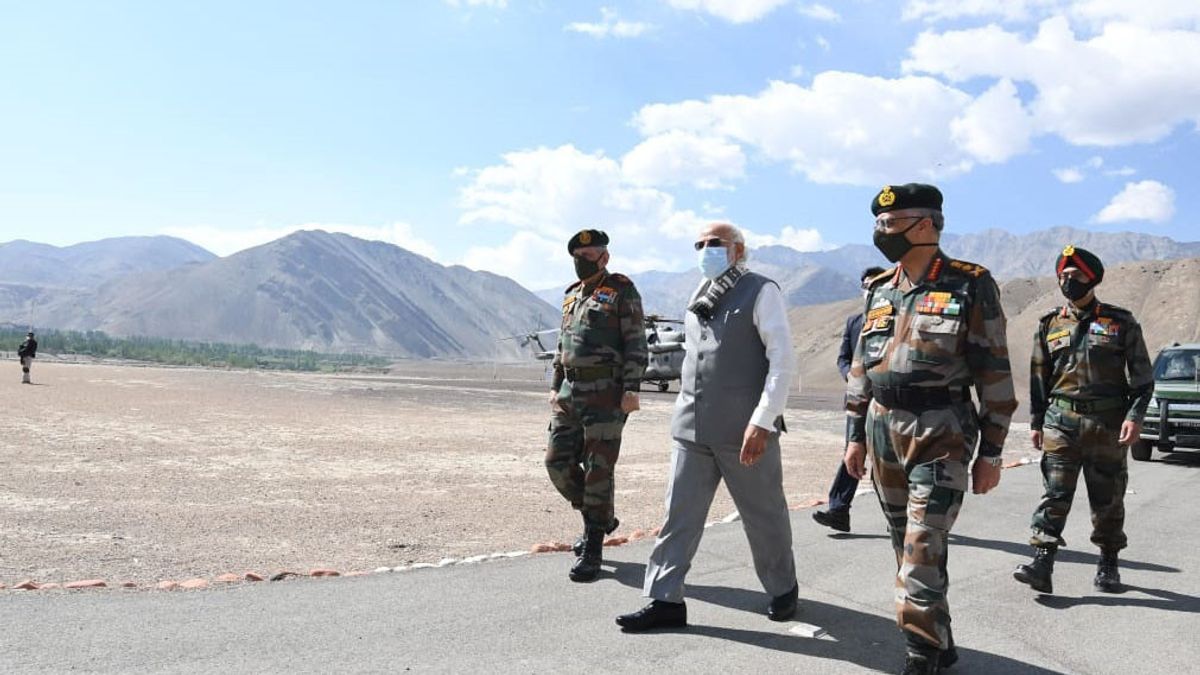JAKARTA - India has accused Chinese troops of provocative acts near the border of a disputed area in the Himalayan highlands. The move violates an earlier agreement between the two nuclear-armed rivals, which was meant to defuse tensions in the region.
The statement was issued by the Indian Ministry of Defense. Launching CNN, India's Ministry of Defense said the People's Liberation Army of China was carrying out provocative military moves to change the status quo. The Indian side also said the Chinese army was violating previous consensus reached during ongoing military and diplomatic engagements in East Ladakh.
The statement also said Indian forces preceded Chinese military activity on the southern bank of Pangong Tso Lake. They took steps to strengthen the position of the Indian army and thwart China's intention to unilaterally change the facts on the ground. However, China's Foreign Ministry denied any attacks on Indian territory.
"The Chinese border forces always strictly adhere to the Actual Line of Control and never cross the line. The border forces of the two countries have maintained communication on the Line of Control," said spokesman Zhao Lijian.
Accuse each otherIn contrast, on the evening of Monday 31 August, a Chinese military spokesman claimed Indian troops had crossed the Actual Line of Control. This is considered to violate China's sovereignty.
"We earnestly demand the Indian side immediately withdraw its troops who illegally cross the line of control, strictly control and detain frontline troops, and adhere to its commitment to avoid further escalation of the situation," said Zhang Shuili, spokesman for the PLA's Western Theater Command.
The incident is the latest in a series of long-running territorial unrest between India and China in the Himalayas. In 1962, India and China engaged in a border war that killed thousands of people.
After the conflict, both sides established an Actual Line of Control of 3,379 kilometers, although neither side agreed on its exact location. Both often accuse each other of crossing borders or trying to expand their territory.
Clashes are not uncommon along the remote, mostly mountainous border. However, the incident on June 15 was the deadliest in decades and led to the collapse of relations between China and India.
Although tensions have eased in the months since then, both sides maintain a large troop presence in the border region. This increases the risk of potential miscalculations in case of sudden and unexpected clashes.
"It is surprising that the Indian army openly broke the agreement, broke their own promise and broke the Actual Line of Control to provoke the Chinese side on June 15," said Wu Qian, a spokesman for the Chinese Ministry of Defense, in late June.
"When the Chinese military forces came to negotiate, they were suddenly attacked by Indian troops, and it caused physical fighting between the two sides and caused casualties," he added.
High-level meetings have been held between Chinese and Indian military commanders since the clash of Galwan Valley, East Ladakh. The meeting helped calm the situation along the de facto border otherwise known as the Actual Line of Control.
The English, Chinese, Japanese, Arabic, and French versions are automatically generated by the AI. So there may still be inaccuracies in translating, please always see Indonesian as our main language. (system supported by DigitalSiber.id)













